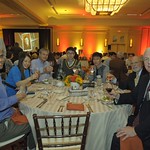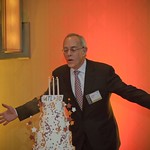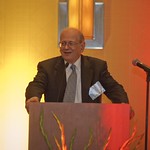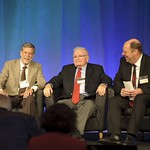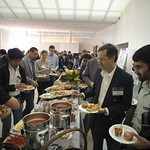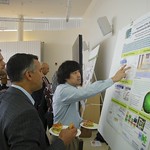|
Anirban Basu
Luis Fernando Velásquez-García
+DEMO
|
A Portable X-ray Generator Using a High-Current Field Emission Cathode and a Reflection Anode for Absorption Imaging of low-Z materials
|
|
Andres Canales
Polina Anikeeva
+DEMO
|
Thermal Drawing of Minimally Invasive Neural Probes
|
|
Winston Chern
Judy Hoyt
|
Strained-Si/Strained-Ge Heterostructure Bilayer TFETs
|
|
Hugh Churchill
Pablo Jarillo-Herrero
|
Transport and Optoelectronics with Two-Dimensional Semiconductors
|
|
Matthew D’Asaro
Jeffrey Lang
+DEMO
|
Stretchable Pressure and Shear Sensitive Skin
|
|
Maggie Delano
Charles Sodini
+DEMO
|
A Portable Bioimpedance Spectroscopy Measurement System for Congestive Heart Failure (CHF) Management
|
|
Wenjing Fang
Jing Kong
|
Asymmetric Growth of Graphene on Copper Enclosure with Layer Control by Chemical Vapor Deposition
|
|
Dan Hanks
Evelyn Wang
|
Evaporation from Nanopores for High Heat Flux Thermal Management
|
|
Wei-Chun Hsu
Gang Chen
+DEMO
|
Ultrathin Crystalline Silicon Solar Cells Enabled by Light-Trapping Nanostructures
|
|
Nathan Ickes
Anantha Chandrakasan
|
Self-powered Long-range Wireless Microsensors for Industrial Applications
|
|
Eric Jones
Silvija Gradečak
|
Quantifying Stress and Strain in Individual III-V Semiconducting Nano-Heterostructures
|
|
Jeong-Gil Kim
George Barbastathis
|
Double Cone Nanostructures for Ultimate Anti-reflectivity of Encapsulated Solar Cells
|
|
Seungbum Lim
David J. Perreault
|
High Frequency Power Conversion Architecture for Grid Interface
|
|
Jianqiang Lin
Jesús del Alamo
& Dimitri Antoniadis
|
Nanometer-scale InGaAs Transistors for Future Logic Applications
|
|
Vitor Manfrinato
Karl Berggren
|
Determining the Resolution Limits of Electron-Beam Lithography
|
|
Sang Hoon Nam
Nicholas Xuanlai Fang
|
Broadband Light Absorption Enhancement
of Ultrathin Titanium Oxide Film on Metallic Reflector for Solar Energy Devices
|
|
Farnaz Niroui
Vladimir Bulović
|
Tunneling Nanoelectromechanical Switches Based on Molecular Thin Films
|
|
Sabino Pietrangelo
Harry Lee
+DEMO
|
An Electronically Steered, Wearable Transcranial Doppler Ultrasound System
|
|
Ujwal Radhakrishna
Dimitri Antoniadis
|
Virtual-Source Model for GaN HEMTs: The Link Between Device Physics and GaN Circuit Design
|
|
Jorg Scholvin
Clifton G. Fonstad
& Ed Boyden
+DEMO
|
High-Density Electrode Arrays for Neural Recording
|
|
Katie Smyth
Sang-Gook Kim
|
Piezoelectric Micro Ultrasonic Transducers for Medical Imaging
|
|
Amr Suleiman
Vivienne Sze
|
Energy-Efficient Hardware for Object Detection
|
|
Xiaoxue Wang
Karen Gleason
|
Volatile Organic Compounds (VOCs) Sensors Based on Oxidative Chemical Vapor Deposition (OCVD)
|
|
Mark Weidman
William Tisdale
|
Well-ordered Quantum Dot Solids with Functional Ligands
|
|
Li Yu
Duane Boning
|
Understanding Variation in Semiconductor Processes, Devices, and Circuits
|
|
Hangbo Zhao
John Hart
|
Strain-Engineered Manufacturing of Freeform Carbon Nanotube Microstructures
|
|
Sungjae Ha & Lili Yu
Tomás Palacios
& Anantha Chandrakasan
|
2D-Electronics for Sensor Applications
|




